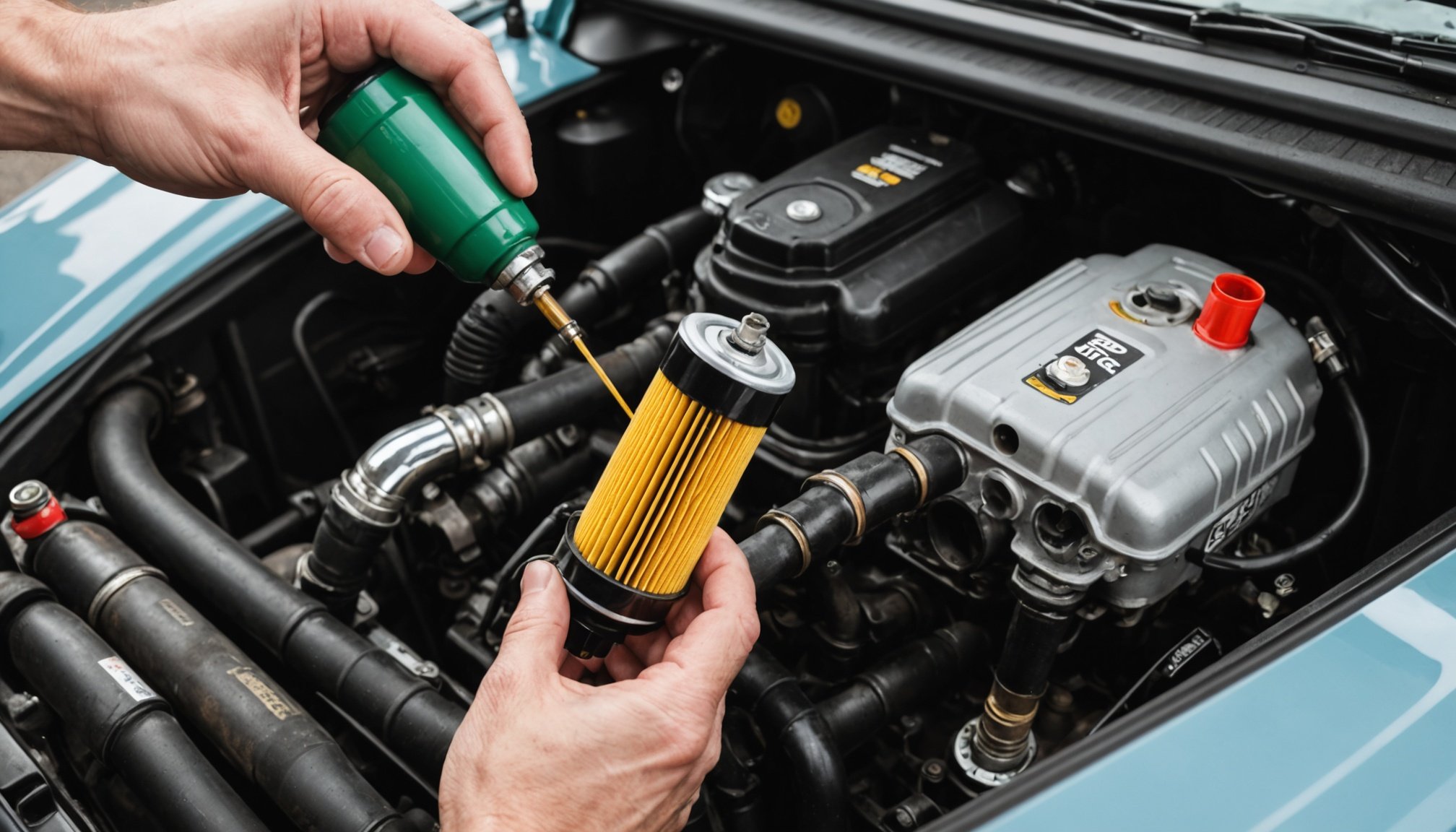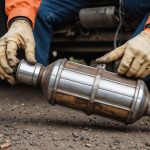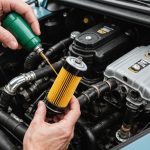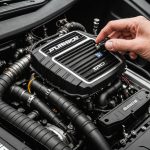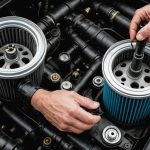Introduction to Changing a Fuel Filter Safely
Changing a fuel filter is essential for maintaining optimal engine performance and preventing potential clogs or blockages in the fuel system. Regular maintenance of the fuel filter ensures that your vehicle runs smoothly, as it prevents contaminants from entering the engine. Understanding fuel filter replacement not only enhances the lifespan of your vehicle but also improves overall fuel efficiency.
However, there are several potential risks involved in this process. Mishandling the replacement can lead to fuel leaks, which pose fire hazards. Moreover, improper installation may result in engine performance issues, ultimately affecting vehicle operation.
Have you seen this : Ultimate diy guide: safely replace your suv”s serpentine belt in easy steps
To mitigate these risks, it’s crucial to adopt specific safety measures. Always wear appropriate personal protective equipment (PPE), such as gloves and goggles, to guard against fuel exposure, which can be harmful to the skin and eyes. It’s prudent to have a fire extinguisher at hand, as a precaution.
In addition to personal safety, follow manufacturer guidelines closely to ensure you execute the task correctly. Proper workspace organization and cleanliness also contribute significantly to a safe replacement process. Being meticulous with these aspects not only safeguards you but also ensures that your vehicle continues to function efficiently.
Also to discover : Crucial safety tips for driving a fully loaded minibus: your ultimate guide to safe navigation
Preparation Before Replacement
Before embarking on a fuel filter change, gather all necessary tools and materials. These typically include a wrench set, a catch tray to collect any fuel spillage, and a new fuel filter. Refer to your vehicle’s manual to ensure compatibility with specific parts.
Setting up a safe workspace is vital. Choose a well-ventilated, flat area to work in, as this minimizes hazardous fume exposure. Keeping the workspace clean and uncluttered prevents accidental slips or mishaps. Prioritize avoiding open flames or sparks nearby to reduce fire hazards.
Equipping yourself with personal protective equipment (PPE), such as gloves and safety goggles, offers a crucial barrier against fuel exposure. Gloves protect the skin from irritants in fuel, while goggles shield your eyes from potentially damaging splashes. Some may overlook PPE, but it is not just an optional extra.
If you’re unsure about anything, consult a professional or someone experienced in vehicle maintenance. Proper preparation not only averts potentially dangerous scenarios but also ensures an efficient and seamless fuel filter change. By adhering to these guidelines, you set the stage for a successful, safe replacement process.
Step-by-Step Installation Process
Taking on a fuel filter replacement task involves meticulous steps to ensure safety and vehicle efficacy. This guide outlines key phases, focusing on precision and clarity.
Disconnecting the Battery
Before anything else, disconnecting the battery is a paramount safety measure. This prevents electrical sparks during the replacement process. To disconnect, locate the negative terminal and use a wrench to loosen it. Ensure the terminal doesn’t accidentally contact the battery post while working.
Relieving Fuel Pressure
Relieving fuel pressure is essential to avoid fuel spraying, which can be hazardous. Begin by locating the fuel pump relay in your vehicle’s fuse box. Start the engine and remove the relay, allowing the engine to stall, indicating pressure relief. Switching off the ignition post-stall further ensures safety.
Removing the Old Fuel Filter
Identifying the fuel filter is usually straightforward; it is typically near the fuel tank or along the fuel line. Use a wrench to loosen the bolts, and gently extract the old filter. Caution is crucial to prevent damage to linked fuel lines.
Installing the New Fuel Filter
Position the new filter following directional arrows indicating fuel flow. Secure it with clamps and bolts, ensuring a tight seal to prevent leaks. Double-check connections for firmness, ensuring optimal filter function. Proper alignment and well-fitted fuel lines underpin a successful installation.
Troubleshooting Common Issues
When tackling fuel filter troubleshooting, being alert to signs of faulty installation is crucial. Issues like irregular engine performance or stalling often indicate problems with the new filter. It’s essential to inspect connections and alignment promptly.
If you detect leaks post-replacement, immediate action is required. Ensure all fittings are secure, and check for worn hoses that may need replacing. Sometimes, the issue stems from a poorly fitted seal or an incorrect filter type.
Addressing performance issues after a fuel filter change can often solve the problem if tackled systematically. Start by retracing installation steps to confirm each phase was executed correctly. Misalignment or loose fittings can easily result in decreased fuel efficiency and engine idling.
Furthermore, ensuring the fuel pressure regulator is functioning can be vital. If pressure hasn’t been relieved properly during installation, it can cause strain on the system. Rechecking connections at the pump relay can help detect any missed errors.
Remember, even a slight oversight might lead to substantial vehicle problems. Therefore, if uncertainties persist despite thorough checks, consulting a professional mechanic is advisable. Their expertise can validate the troubleshooting process and ensure peace of mind.
Additional Safety Tips
Ensuring safety during car maintenance involves attention to specific elements and adopting effective measures. A well-ventilated environment is a key safety aspect, reducing exposure to harmful fumes, especially during a fuel filter change. Adequate airflow is crucial to prevent dizziness or respiratory irritation.
Understanding your vehicle’s specifications can greatly enhance safety. Delving into your vehicle’s manual provides exact instructions for replacement and helps identify precise specifications, ensuring compatibility with replacement parts. This detailed knowledge minimizes risks associated with incorrect installations and mishandled components.
Undertaking regular maintenance checks can preempt potential issues. Consistent inspections detect wear before they evolve into significant problems, promoting vehicle longevity and reliability. These checks are not only a preventative measure but also an opportunity to familiarize yourself further with your car’s mechanics.
When uncertain, seeking professional help is advisable. Consulting a professional mechanic guarantees that tasks are performed correctly, reducing the risk of errors leading to costly repairs. They offer expert insights and techniques, enriching one’s understanding of effective and safe car maintenance practices. Embrace these safety tips to protect yourself and your vehicle, fostering a secure maintenance environment.
FAQs on Fuel Filter Replacement
Fuel filter replacement often raises several common questions. Addressing these can help clarify doubts and ensure a smooth process.
What are the first signs of a clogged fuel filter?
A common symptom is reduced engine performance, like sputtering or stalling, particularly during acceleration. This points to restricted fuel flow due to a clogged filter, obstructing proper fuel delivery to the engine.
How often should I change the fuel filter?
Typically, manufacturers recommend replacement every 20,000 to 40,000 miles. However, it can vary based on vehicle type and driving conditions. Refer to your vehicle’s manual for precise intervals.
Is replacing a fuel filter a DIY task, or should I see a mechanic?
While it’s feasible for experienced DIYers with comprehensive knowledge of fuel systems, those less familiar should consult a professional mechanic. Incorrect installation can lead to fuel leaks or engine issues.
What safety measures should I adhere to during replacement?
Always wear PPE, maintain a well-ventilated workspace, and ensure no open flames are nearby. Disconnecting the battery is critical to prevent accidental sparks during the operation.
Potential Risks to Avoid
Navigating fuel filter replacement involves recognizing and mitigating potential risks. Handling flammable materials, like fuel, demands extreme caution. Ensure the workspace is free from open flames, as vapours can ignite easily, presenting significant fire hazards. Always have a fire extinguisher within reach for emergencies.
Exposure to fuel poses health risks. Contact with skin and eyes can lead to irritation or burns. Inhaling fumes might cause dizziness or respiratory issues. To minimize these risks, always employ personal protective equipment (PPE), such as gloves and goggles.
Missteps during replacement can lead to dangerous outcomes. Loosely secured filters may result in fuel leaks, increasing the risk of fire. Misaligning the filter can compromise vehicle performance, causing erratic operations or engine stalling. Identifying the correct orientation is essential to avoid these pitfalls.
Common mistakes, such as neglecting to relieve fuel pressure or improperly disconnecting the battery, can cause accidental spills or electrical sparks. These oversights can lead to costly repairs and are entirely preventable with meticulous attention to detail. Familiarizing oneself with these potential risks helps ensure a safer, smoother replacement experience.

